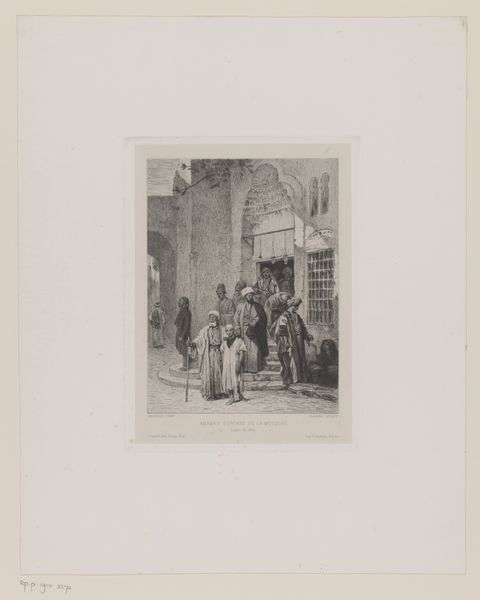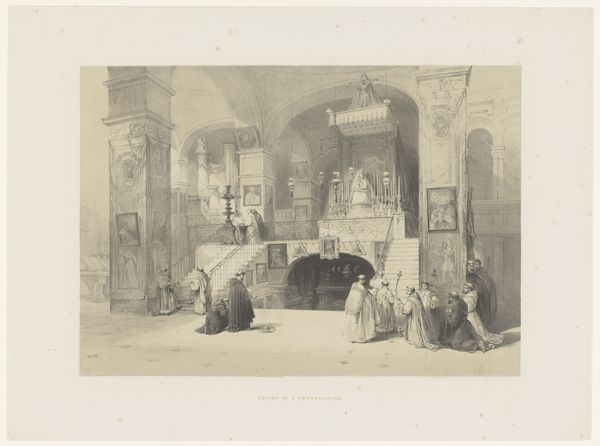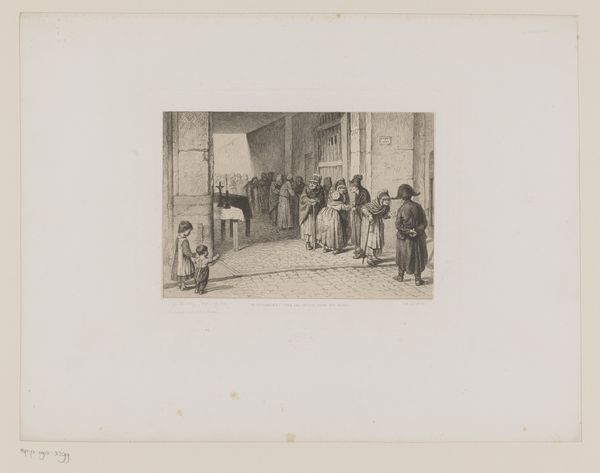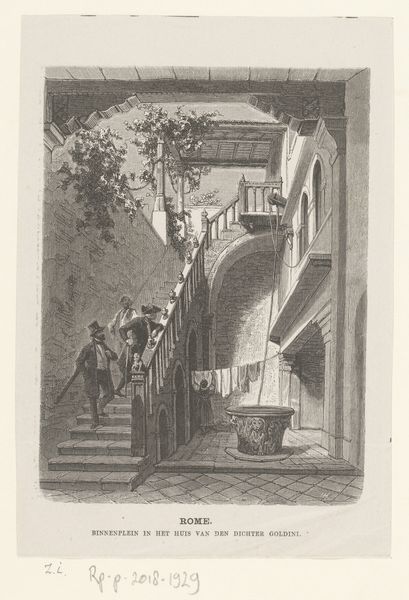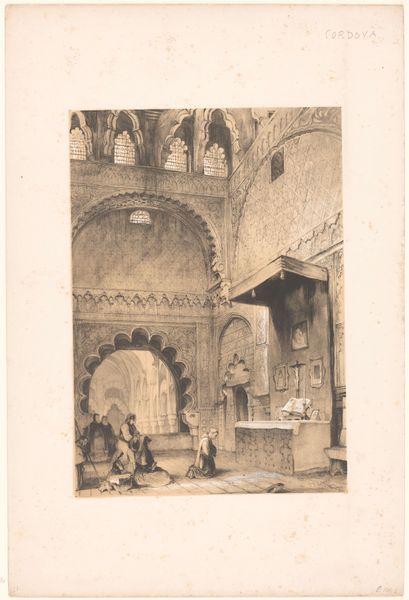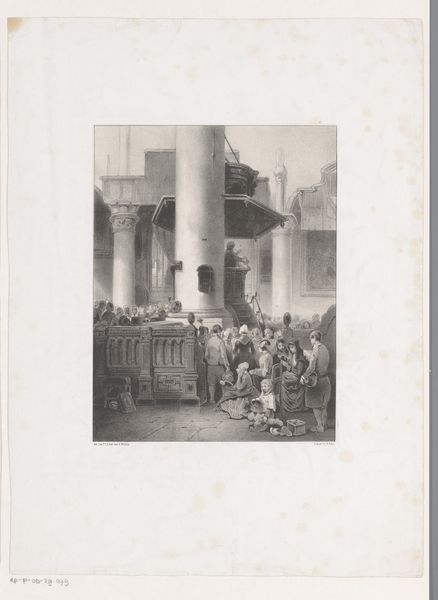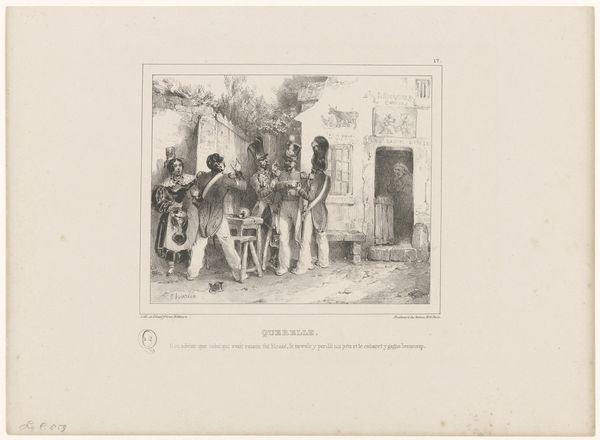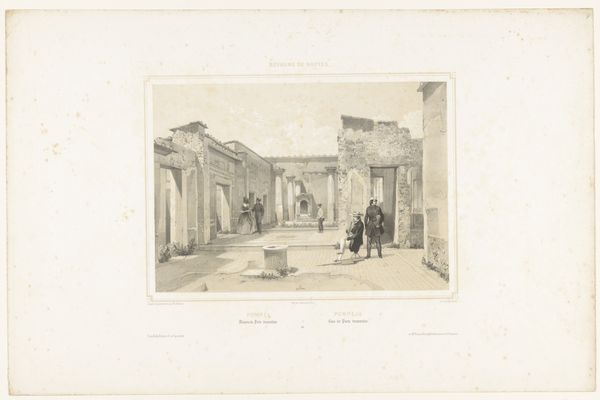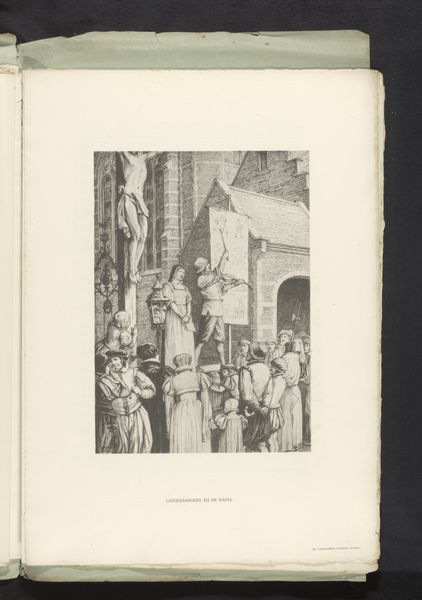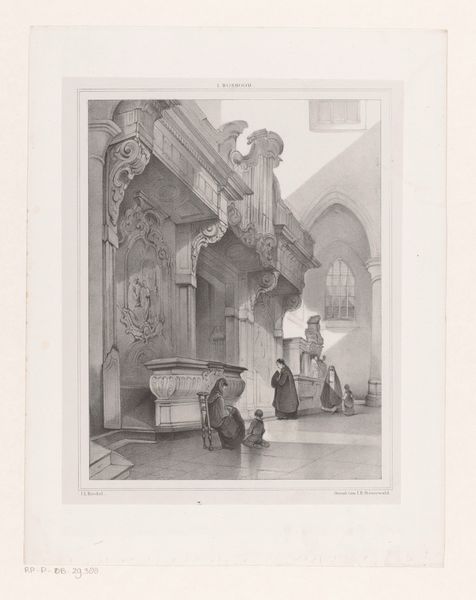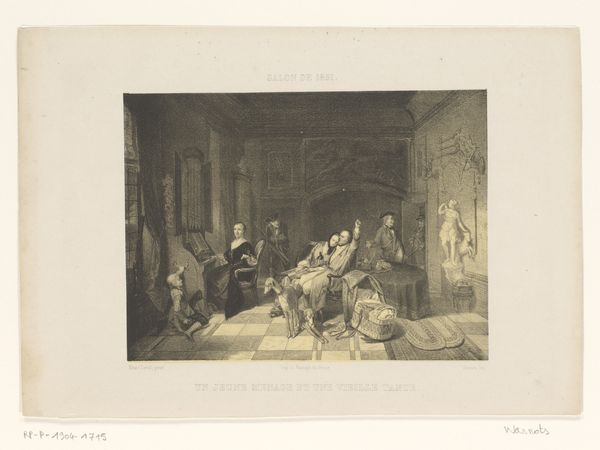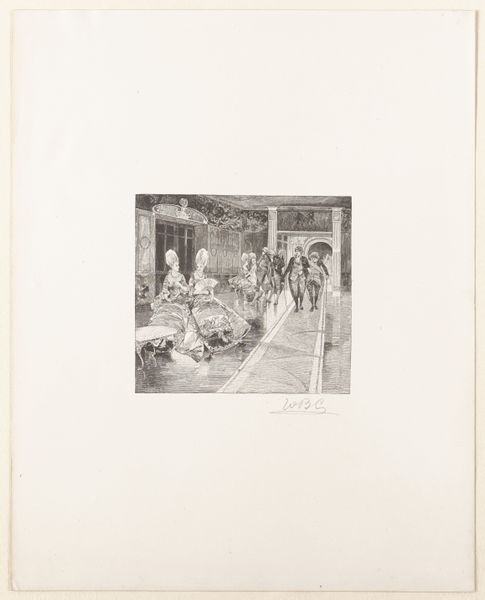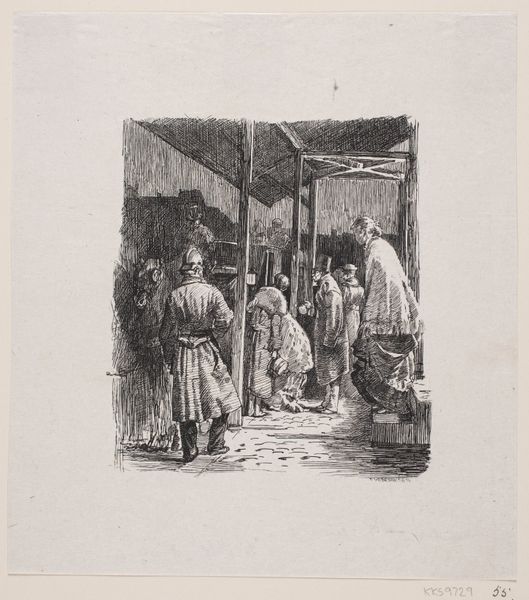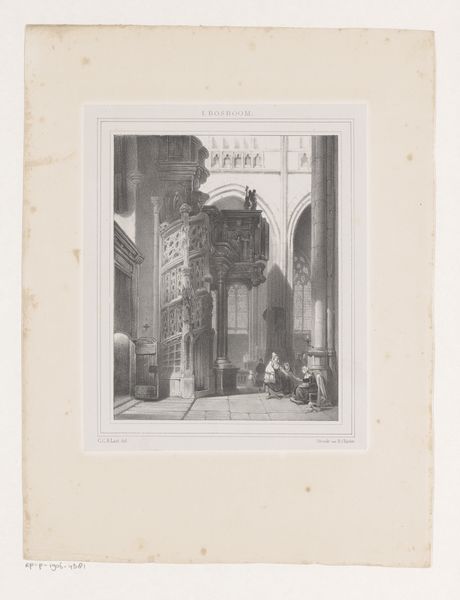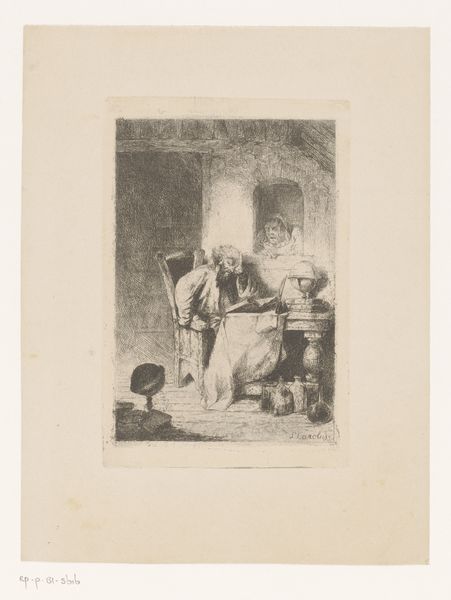
Liedverkopers onder de galerij van het Théatre Français te Parijs c. 1893 - 1910
0:00
0:00
Dimensions: height 210 mm, width 150 mm
Copyright: Rijks Museum: Open Domain
Editor: This is Rodolphe Piguet’s "Liedverkopers onder de galerij van het Théâtre Français te Parijs," an etching dating from around 1893 to 1910. I find the composition incredibly detailed; it really captures the bustling street life. What can you tell me about the context in which this piece was created? Curator: Well, considering the location—the Théâtre Français—it speaks volumes about the democratization of art and culture in Paris during this period. The printing press made art more accessible and commercial. Here, Piguet depicts sheet music sellers, and we see figures examining affordable portraits and publications. To whom did this availability appeal? Editor: Probably to the emerging middle class who wanted to participate in the Parisian cultural scene, but maybe didn't have access to the fine art world? Curator: Precisely! This work shows the burgeoning commercialization of culture; consider how imagery was being mass-produced and distributed. How did institutions, like theaters, become part of this new marketplace? Editor: I guess the theater became more of a place for the public and not only for aristocrats, since there was some material that common people could afford and be interested in. Curator: Exactly. Did Piguet challenge any of these dynamics? Or was he more of a chronicler? Editor: That’s interesting. It's hard to tell if it is critical of, or celebrates the commercialisation of music. I think that the fact that the scene happens in front of a cultural institution suggests it's more about the change of use of such institutions. Curator: I agree, and his detailed etching freezes a moment of societal transformation in the heart of Paris. Editor: I’ll definitely be considering this idea of cultural democratization in Parisian life, as represented in Piguet’s piece from now on. Thanks!
Comments
No comments
Be the first to comment and join the conversation on the ultimate creative platform.
